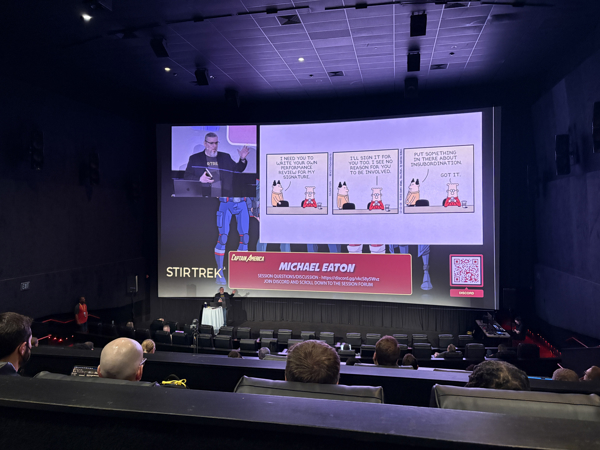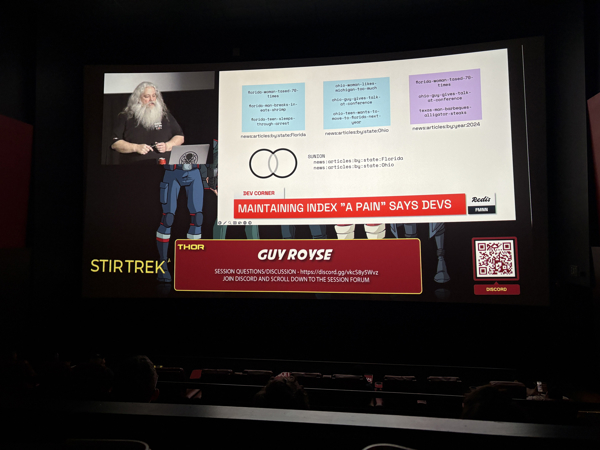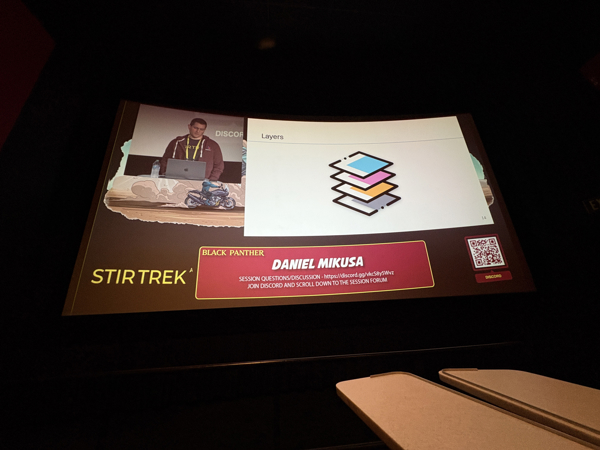I spoke at this year's Stir Trek conference in Columbus, OH for my third time. I presented JavaScript: The (Really) Good Parts - a fast-paced walkthrough of significant JavaScript features released since Douglas Crockford's book was last popular (roughly half-a-billion years ago).
All in all, Stir Trek was great, if not a little amazing at times.
But First, Logistics
Oh my. Movie theaters aren't necessarily meant for live presentations, and this is painfully obvious every year at Stir Trek with audio, lighting, and other technology issues cropping up. Unfortunately some issues this year were capital I-S-S-U-E-S, particularly theaters with so much echo that speakers were drowned out by their own voices on a multi-second delay.
As the day marched on many of these audio issues were addressed, but man, what a rough start.
The Sessions!
I went to a few other sessions throughout the day, with a few particular highlights:
Beyond Technology: Skills for Success
The Who & What: Michael Eaton described strategies and soft skills that's helped him throughout his career, particularly around journaling.
My Thoughts: Sometimes going analog is the best way to manage your digital life. Michael spent significant time detailing the various ways he's kept track of career successes (and failures!) through journaling (mostly via pen and paper). This was a great reminder that not all sessions need to solve technology problems: sometimes we need to take care of ourselves first.
Florida Man Uses Cache as Database
The Who & What: Guy Royse humorously covered the basics of Redis as a cache and database.
My Thoughts: While this was a worthwhile intro to Redis, as a presenter myself, the way the "Florida Man" theme was used stood out: it never felt forced or necessary to carry the presentation. I was able to focus on either the humor or the Redis concepts without one distracting from the other. I've taken notes for my own presentations. Well done!
Everything you wanted to know about containers but were afraid to ask
The Who & What: Daniel Mikusa dives into the basics of when, why, and how to use containers for deploying software.
My Thoughts: Containers are neat and that's about the best I can make of them. There are two ways to teach containers: by concept (DIAGRAMS!) and by example (DEMO!?). Unfortuntely demoing containers isn't sexy enough for the big screen: lots of code examples and live demoes are quickly drowned out by the reality of watching someone type in a terminal for 45 minutes. Still, this was demo-by-example, and I learned a few new things about the inner workings of containers.
A Correction to My Talk
While talking about JavaScript's optional chaining feature, I mispoke about what side of the operator is evaluated before short-circuiting. Given the following example:
let ship = {
captain: {
firstName: "Jean Luc",
lastName: "Picard"
}
}
let middleName = ship.captain?.middleName;
In this example, the captain in ship.captain?.middleName is tested for null or undefined before attempting to continue down the chain to middleName. In this case, captain would resolve and continue to return the value of middleName (which is undefined itself in this example).
I regret the error.



